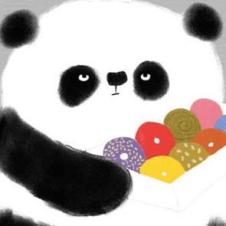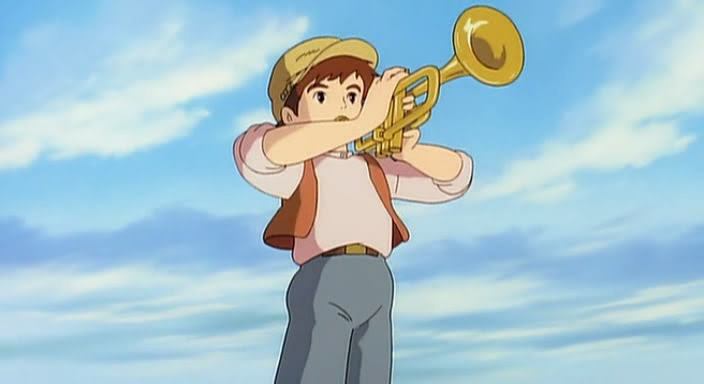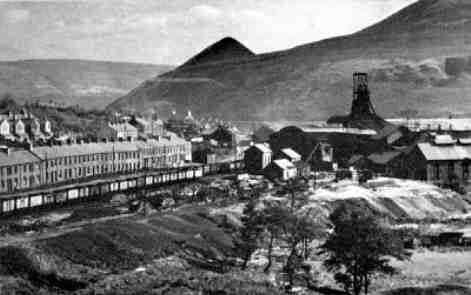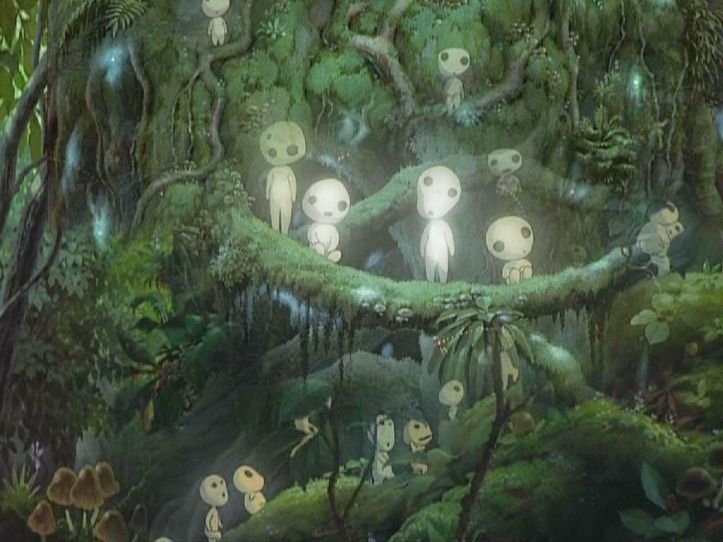 Laputa: Castle in the Sky
Laputa: Castle in the Sky
Directed by Hayao Miyazaki
…

JOEL
Barbican Comic Forum
00000000 / Kraken
Brain Teeth
The very first Studio Ghibli film but not the first Hayao Miyazaki film (The Castle of Cagliostro and Nausicaä of the Valley of the Wind both came before).
Yeah I know everyone reading this already knows this but just in case: Studio Ghibli is basically the Japanese Disney only if anything more well-loved (I would be very shocked if anyone writes anything negative about Studio Ghibli on this thread: that’s like being anti Santa-Claus or something). I feel like that we probably could have chosen any of their films to talk about on here and there would have been a lot to dig into (and hey please: if anyone wants to write something about how much they love Spirited Away or My Neighbor Totoro then please go right ahead… Would love to read it and you know: the more the merrier).
But yeah I thought I’d chose Laputa: Castle in the Sky (or as some of you may know it: just Castle in the Sky as apparently it was re marketed after some people realized that “La Puta” had a whole different meaning which was diametrically opposed to what you’d want from a family friendly kid’s film)… I haven’t actually had a chance to get round to rewatching it yet so I should admit now that my memory of it is a little hazy. But just to start us off here’s two of the reasons why I love it so much…
First up: the lushness of it.
I don’t know how many of you have read Pitchfork’s review of Kid A but it’s one of the most gloriously over the top pieces of gushing that I’ve ever read in my whole life. It just goes so far out there like it wanted to be the most grandiose music review of all time (which if you’ve read as many music reviews as I have you’ll know is quite a feat) but every so often (from time to time) there’s a phrase from it that pops into my head: “Comparing this to other albums is like comparing an aquarium to blue construction paper.” Which captures a little of how I feel about La Puta. It doesn’t feel like watching something that people have painstakingly drawn – instead it feels like looking through a window into a whole new world which actually now I think about is one of my most favorite things about all art everywhere: the way it opens you up into a whole new place. There’s a line in an Alan Moore interview about how he never really felt the need for travelling because he had books and could use them to travel to anyplace on the planet and also to countless other planets that didn’t even exist (I may be paraphrasing slightly and I know he said it much better but whatever). Is it strange to say that I can actually feel my brain being pulled and stretched when it’s confronted with something that’s a little our world only different – a little bit weirder / a little bit stranger? And er don’t get me started on the boring ass concept of “world-building” which is basically boring people trying to understand things that won’t fit into their minds. I just want that feeling of otherness. And La Puta just keeps delivering that feeling again and again and again. I mean I’m only half joking when I say this – but isn’t that like the whole point of cinema? To see cool crazy outlandish shit that doesn’t even make sense? A dinosaur on fire! Skyscrapers made of ants!! Humans with too many eyes!!! You know – stuff like that.
Yum yum yum.

Second thing: is the way it fucks with the whole Good versus Evil thing.
I could be wrong: but I think this is actually an actual Studio Ghibli trademark but the first time I saw La Puta (as an already pretty fully grown adult I should admit) it kinda blew my tiny little mind that the people who I thought were the Bad Guys (damn Sky Pirates!) actually… weren’t. Which yeah ok maybe seems like not even a big thing at all but I kinda feel like maybe is one of the main problems with how we’re made to think about the world. I mean: there are obviously obviously a million and one examples of this kinda stuff – most of them with hashtags at the start – but for now I’ll just share one from the CIA (this video here) “If I learned one lesson from my time with the CIA, it is this: Everybody believes they are the good guy… The only real way to disarm your enemy is to listen to them… If you hear them out, if you’re brave enough to really listen to their story, you can see that more often than not you might’ve made some of the same choices if you’d lived their life instead of yours.”
I mean yeah ok – massive oversimplification and all the rest of it. But I guess you could say that’s one of the core things of the things that I believe. And most of the time movies well… don’t operate like that. Because well – it’s simpler and (uh oh) maybe more satisfying to just have bad guys being bad because they’re just bad.
Third thing (third thing??)
Whilst doing prep for writing this I found the following Hayao Miyazak quote and I just loved it so much so wanted to throw it into the pot too: “If you don’t spend time watching real people, you can’t do this, because you’ve never seen it. Some people spend their lives interested only in themselves. Almost all Japanese animation is produced with hardly any basis taken from observing real people … It’s produced by humans who can’t stand looking at other humans. And that’s why the industry is full of otaku!”
Oh and: IMPORTANT NOTE: If you watched the English dubbed version: WHY? WHY?WHY?WHY?
Over to you.

JONATHAN
Barbican Comic Forum
I haven’t seen recently, so this just my own Laputa love story, until I watch it next week, so thanks for bearing with me.
I first watched Laputa in the best way. I think I was 10 or 11 and it was just shoved on TV on a Sunday morning, presumably because the BBC just thought “excellent, long cartoon, that’ll take up some time” so it must have been dubbed I guess. So I watched it, with zero expectations and thought everything about it was amazing – and that was it. Naturally I couldn’t remember the name of it and spent several years after doing detective work to work out what it was. It turns out my best friend might have seen it in a similar way and we both sort of knew it in vague terms but pre-internet what could you do? I only found out what is was called several years later because it was noted by a video game magazine (big up Super Play) as a reference point for Steampunk. Still, even knowing the name wasn’t that helpful because you could not buy it in any shops anywhere (something to do with Disney buying the Home video release rights and not doing anything with them). I once went all the way to the end of the Central line (the Horror, the Horror!) to a random video shop in the hope of buying a copy, because they’d listed it somewhere. They didn’t have it though.



It’s not necessarily the best Ghibli film (which is probably Spirited Away, inspirational Chongqing location pictured above), but it’s my favourite. Something to do with its sensibility. The story is fairly straightforward but, as Joel suggests, it has an edge to it. It starts at the end of a whole other movie, and throws you straight into the action and just expects you to keep up as it adds more and more layers to the cake. There’s a magical girl who is on the run for the full length of the movie, then there’s some sort of global conspiracy, based on some sort of ancient flying city with robots, and giant armies in airships fighting sky pirates. Experiencing it as a kid who had grown up with prosaic He-Man style cartoons, there was so much about it that was mind blowing. (Although if you rewatch the Transformers anime movie from the same era, that is also damn harsh). This was a year or two before Akira and Manga being a big thing. But by accident it means that I have the same problem with Anime as I do with comics. I started with pretty much the best and most iconic examples of the genre, and so everything since generally measures poorly to that, with very few exceptions.
Side note: The soundtrack is also amazing, and seems to have become a weird meme. My son was given a make-your-own chinese music box for Christmas and it just plays the Laputa theme.
See in my mind it starts out with Sheeta on this airship and she’s with all her friends and some guy who is maybe like her dad (?) and then the evil sky pirates comes and everything goes crazy. And then as the film goes along you kinda find out that the evil pirates are actually the good guys and the good guys at the start are actually the bad guys… And lol of course it’s nothing like that at all. The bad guys are bad right from the start and the sky pirates are kinda… always in the middle. Oh well. That’ll teach me.
Altho – it is kinda like a Studio Ghibli trademark tho – no? Which might be where I got it from? And to be fair – in any other film it’s not the kinda thing that would happen. You wouldn’t have Simba joining forces with the Hyenas or whatever right?
Also: wanna talk about the trumpet scene. The bit when Pazu starts up on his house and the doves fly around. I mean – isn’t that just one of the best things ever? Like. Normally I’m a very steadfast believer in the idea that every part of a story is there to kinda mean something: and what’s kinda beautiful is that the trumpet scene doesn’t really do anything. It doesn’t add anything to the story. It doesn’t really give you any information (maybe it tells you a little bit about Pazu maybe? But not really…). And if you took it out – it wouldn’t make any difference to the story (in any other film you can kinda imagine a scene later on where it became really important that Pazu plays a trumpet or something…): but yeah – I love it just in terms of how it’s this beautiful moment that just completely transports you to another world. Another place. Another time. It’s just totally fucking cool.

And there’s a million things just like it that the movie does that are just sorta transcendent that actually makes kinda writing about it pretty tricky.
Just kinda wanna post clips and just say: LOOK!

JONATHAN
Barbican Comic Forum
So Wikipedia tells me that Pazu’s mining town is based on Wales, and that Miyazaki was inspired by the miners; their tough way of life; their solidarity; and their struggle through the strikes and pit closures.
They” miners are only given 10 minutes but the defiant independence of the town gives you enough to believe Pazu is a tough and resilient kid. It also gives a nice visual backdrop – for a film which leans heavily on the vertical axis, the most stunning shot is the valley town, including the trumpet sequence.

Having built up this idyllic setting (with the help of the trumpet sequence) it adds to to the threat from Muska and the government troops that they would disrupt this community with their petty power grabbing and greed. And of course as the film was released this was happening to towns across Wales and the the North. It speaks volumes for Miyazaki that he saw this struggle exactly for what it was.
But it then leaves us in an interesting place with hierarchy of evil. The pirates are greedy and chaotic, but don’t actually bear anyone ill will. They only ever operate for profit, and if a 12 year old girl falls off an airship, that’s just the cost of doing business. Their chaotic neutral position is rewarded with treasure at the end. Muska has a tragic story at the end, he’s a sort Arvin Sloane character blinded by obsession and seeing himself as the heroic conqueror. But the question we are left with throughout the whole film is “what are you even fighting for?” He is an authoritarian government agent, but apparently also just wants to see the world burn.

OK so he’s your standard megalomaniac, a fairly lazy trope, and not one the Miyazaki has returned to very often. Indeed he has also shied away from making men the default villains as well, preferring complex female antagonists [clapping emoji] But it could have easily been resolved thusly…
Yes one can and should valorise the coal mining communities, they represent solidarity and in the film a physicality and sense of belonging that means that they are not intimidated by authority. However, as a climate campaigner they are also the real evil of the movie. It is mining companies who are destroying the planet, not floating islands. If, (and when) I get my hands on a weapon of unimaginable destructive power, coal mining would be near the top of the list of industries to destroy. The message of the film is that we need to respect nature, but thanks to coal miners we have already found the location of enough fossil fuels to call time on human civilisation, take the majority of animals species with us on the way out, and actually leave only solar powered robots behind to walk the Earth. Imagine, if you can, Disney making a film which showed how nice and heroic a family man the guy who designed the Death Star was, it would be ridiculous right?

So the story could have come full circle if Muska could have been pitted (sorry for the pun) against the miners themselves as a sort of eco-terrorist, frustrated with humanities’ greed (and what right thinking person doesn’t hate the social sciences?). This would lend him a motivation superior to for example Thanos’ weird finger-clicking plan.
That being said, in terms of pacing, sometimes you need a straight up evil bad guy, and climate change was less of a thing in the mid-eighties, so I will allow it. To end on the end of Muska though, it is suggested that he is killed In the finale, but it would have been more poetic if he had been left stranded on the de-powered floating island alone for the rest of his days screaming into the abysses above and below him.
…
So I guess on the question is “what makes Miyazaki so damn great?” and how can that lineage back from the masterpieces of Howl’s Moving Castle and Spirited Away be traced back to Laputa.

The attention to detail is the first thing that seems to offer a clue. It’s like every little bit of the picture he asks “how I can do more with this?” Take the wood spirits from Princess Mononoke – these little guys don’t need to exist, they don’t do anything apart from add a little alien magic (and also have a slight visual connection to the Laputa Robots too). I guess they also have some relation to the dust mites in My Neighbour Totoro too but it all adds to a sort of Miyazakian landscape. The other side of the detail is more architectural – maybe it’s me but I was pleased by the shot of water on one side of Laputa because I like to think Miyazaki’s line it thought was: “how do Laputians drink? Where do they store the water? Would they have some sort of fresh water lake within the walls? Well I guess I’ll need to show that to the audience.” This goes into overdrive in Spirited Away where he creates an entire universe.

Secondly it’s the characters. His heroes are all usually children who wear their hearts on their sleeves, who can frustrated and cross but are also generous and thoughtful. You like them and want them to win, usually within about 5 minutes of meeting them. My Neighbour Totoro has almost no plot except that these kids are going through some shit and you hope they get through it OK. But in Laputa and other films the characters are in constant jeopardy. Admittedly concerns include the real possibility that Sheeta might be molested by several pirates (it’s weird right?) but also the very real worry that any one of the characters might fall to their deaths mid sentence as they defy gravity again and again. I don’t know if it’s my middle aged cynicism but in many recent films (sup Baby Driver) I find it really hard to give a shit about the characters. Because there aren’t any Ghibli sequels and most the characters have some sort of complexity, there are stakes. What is Kiki the Witch going to do without her powers? How will Chihiro navigate the Gormenghastian Bathhouse in Spirited Away? How does half a dozen biplanes and a dirigible takedown a giant airship and hundreds of invincible robots? And while sometimes the answers may be a little cheap (prince under a spell is it Howl’s Moving Castle? Jolly good) or of the “it wasn’t about breaking the spell but the friends we made along the way” variety, it’s part of the whole package so you don’t feel short changed.
…
This post was created by our Film Club email list.
If you’d like to join the conversation send an email marked “Film Club” to here.